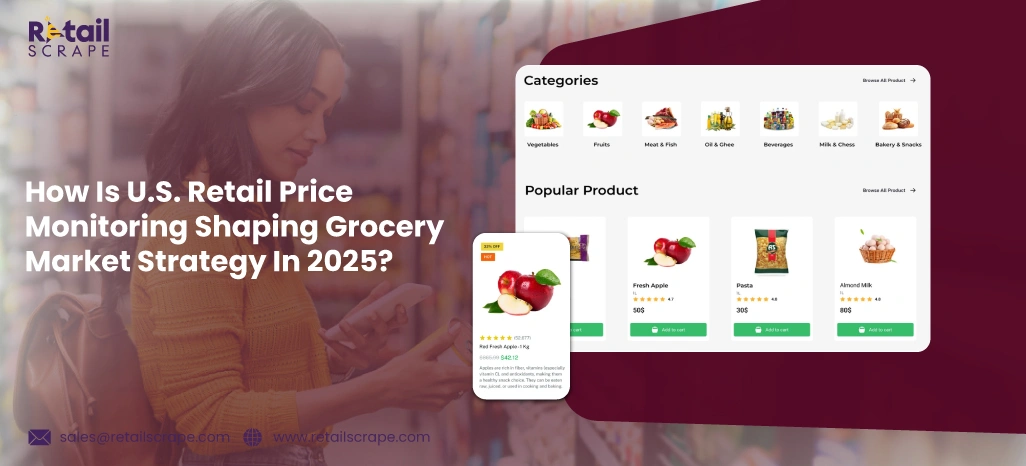
Introduction
As 2025 unfolds, the U.S. grocery retail landscape is undergoing rapid changes influenced by rising inflation, shifting consumer preferences, and heightened digital competition. In such a fast-moving market, success depends not on assumptions but on strategic clarity, data-backed insights, and Real-Time Price Monitoring to stay aligned with evolving shopper expectations.
Forward-thinking retailers and CPG brands are turning to advanced pricing intelligence to drive smarter decisions, fine-tune product assortments, and improve profit margins. Pricing today is more than just a label; it reflects customer intent, competitor strategies, and live market movements.
This is where U.S. Retail Price Monitoring plays a crucial role—empowering businesses with real-time visibility and actionable insights to stay in sync with the market’s fast-changing rhythm.
The Driving Forces Behind Grocery Price Intelligence in 2025
The U.S. grocery market is undergoing swift transformation, driven by the demand for more intelligent decision-making and operational agility. Multiple critical factors are propelling this shift, and businesses are increasingly turning to Grocery Data Scraping to adapt quickly and stay informed in this evolving landscape.
- Inflationary Pressures: Rising fuel and transportation expenses are triggering frequent price adjustments, making real-time monitoring essential.
- E-commerce Expansion: Dominant players like Walmart, Amazon, and Instacart are reshaping pricing expectations by increasing visibility and competitive intensity in the digital grocery space.
- Shifting Consumer Behavior: Today’s shoppers are more price-aware than ever, actively comparing product costs across multiple platforms before making a purchase.
To stay relevant, retailers must embrace Intelligent Retail Pricing USA models that adapt to these fast-moving variables. Clinging to manual or outdated pricing strategies is no longer viable—it directly risks customer retention and competitive edge.
Advanced U.S. Retail Price Monitoring Trends in 2025
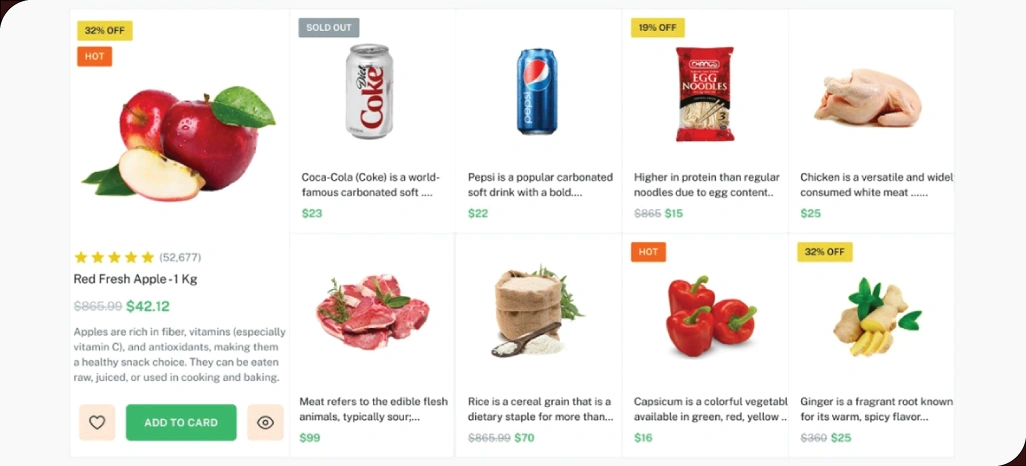
In 2025, U.S. Retail Price Monitoring has evolved into a sophisticated system powered by AI, machine learning, and vast volumes of retail data. These modern tools offer much more than simple price checks — they provide innovative, timely, and granular insights that support strategic decision-making.
Retailers now benefit from:
- Real-time updates delivered daily and hourly
- Location-based pricing and trend analysis
- Deep visibility at the individual product level
- Ongoing competitor pricing comparison
By processing millions of SKUs across digital shelves and physical stores, businesses can rely on Real-Time Retail Intelligence USA for accurate, predictive insights that help drive pricing precision and market responsiveness.
Strategic Advantages for Modern Grocery Retailers
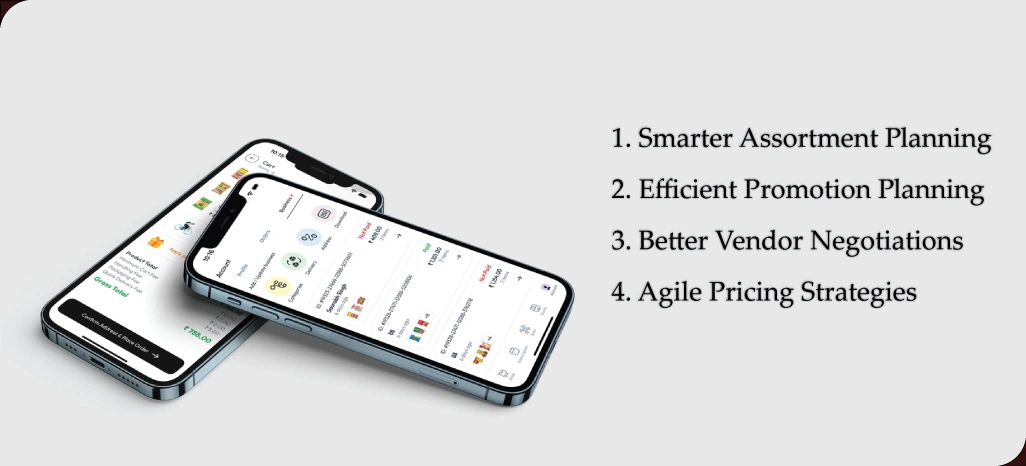
Modern grocery retailers are redefining how pricing influences operational decisions. What once was a reactive approach has now become a vital strategic function that directly impacts profitability, inventory flow, and customer loyalty.
1. Smarter Assortment Planning
Retailers like Kroger and Safeway rely heavily on localized pricing insights to build more innovative shelf strategies. By aligning product assortments with regional price trends and demand signals, they reduce overstocks and missed sales opportunities.
- Identify high-performing SKUs in specific regions using historical pricing data.
- Tailor inventory to match seasonal and regional buying behavior.
- Replace underperforming items with trend-responsive alternatives.
- Ensure each store’s product mix aligns with local price elasticity.
2. Efficient Promotion Planning
Understanding competitor promotions allows for more thoughtful planning, not guesswork. With Competitive Pricing Analytics, grocery retailers avoid costly discounting mistakes and optimize campaigns for better returns.
- Benchmark offers real-time competitor discounts.
- Plan promotions with margin protection in mind.
- Prevent over-discounting by identifying true price gaps.
- Use price intelligence to time campaigns more strategically.
3. Better Vendor Negotiations
Negotiating supplier contracts is no longer just about volume — it’s about pricing precision. Real-time and historical price data now serve as leverage to secure more favorable terms and product costs.
- Present factual pricing trends to support negotiation positions.
- Justify cost reductions or demand price protection from suppliers.
- Identify pricing inconsistencies across distributors.
- Build long-term vendor relationships with data transparency.
4. Agile Pricing Strategies
Modern grocers are shifting to flexible models where pricing is responsive, not static. With Dynamic Price Tracking Solutions, retailers can capture demand surges and optimize prices with speed and precision.
- Automate price changes based on real-time market shifts.
- Implement zone-based pricing based on competitive pressure.
- Protect margins during high-demand windows.
- Quickly react to competitor pricing movements in core categories.
Merging Grocery and Delivery Insights for Smarter Pricing
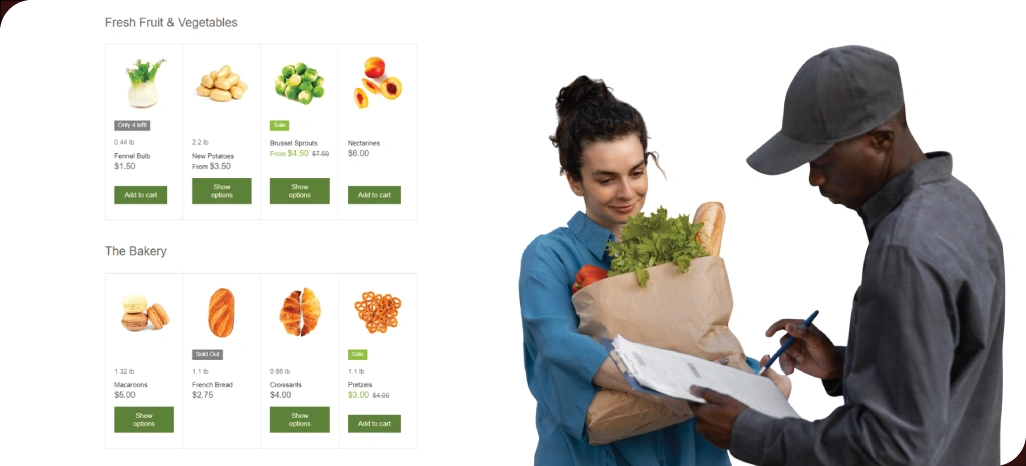
The U.S. grocery market is undergoing swift transformation, driven by the demand for more intelligent decision-making and operational agility. Multiple critical factors are propelling this shift, and businesses are increasingly turning to Grocery Data Scraping to adapt quickly and stay informed in this evolving landscape.
A key innovation emerging in this space is the application of Food Delivery Data Intelligence to refine grocery pricing. By extracting actionable insights from delivery platforms — including item-level pricing, surge patterns, and regional demand trends — grocery retailers are now able to:
- Anticipate evolving consumer behavior with greater accuracy.
- Adjust pricing dynamically in response to delivery demand patterns.
- Align promotional campaigns with trends in meal kits and ready-to-eat products.
As we move through 2025, leading grocery retailers understand that success requires looking beyond traditional models. By incorporating insights from food delivery behavior, they are crafting smarter, more responsive pricing strategies — powered by Grocery Data Scraping.
Strategic Edge: How Walmart & Amazon Price Insights Shape Retail Moves
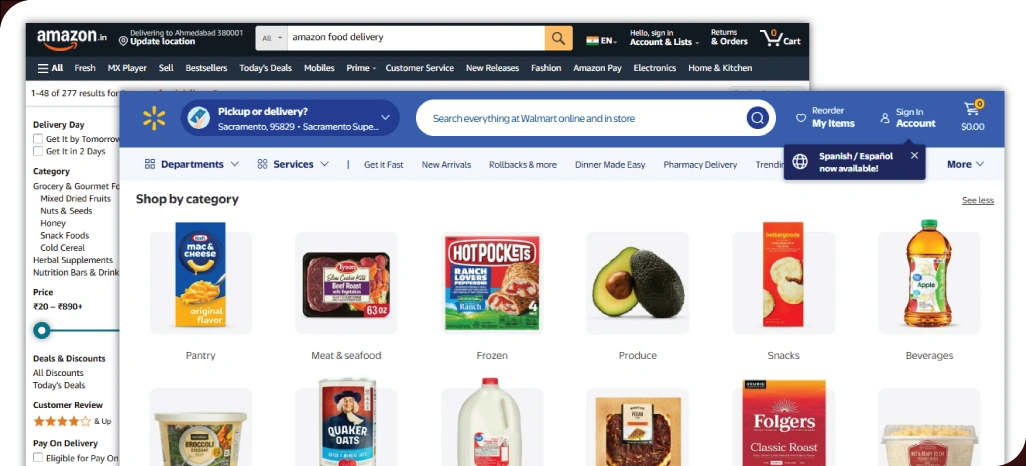
Walmart and Amazon continue to shape the landscape of U.S. grocery retail with aggressive pricing strategies that influence the entire market. To stay competitive, many analysts now view Walmart & Amazon Price Data Scraping as essential for strategic planning.
Incorporating Amazon Product Data Scraping allows retailers to:
- Identify early signs of pricing shifts and intensifying competition.
- Monitor seasonal price trends across various grocery categories.
- React quickly by refining pricing models ahead of market movements.
Access to this level of insight empowers traditional grocers to respond more confidently and competitively in a market led by dominant players.
Key Shifts Redefining Grocery Pricing Strategies
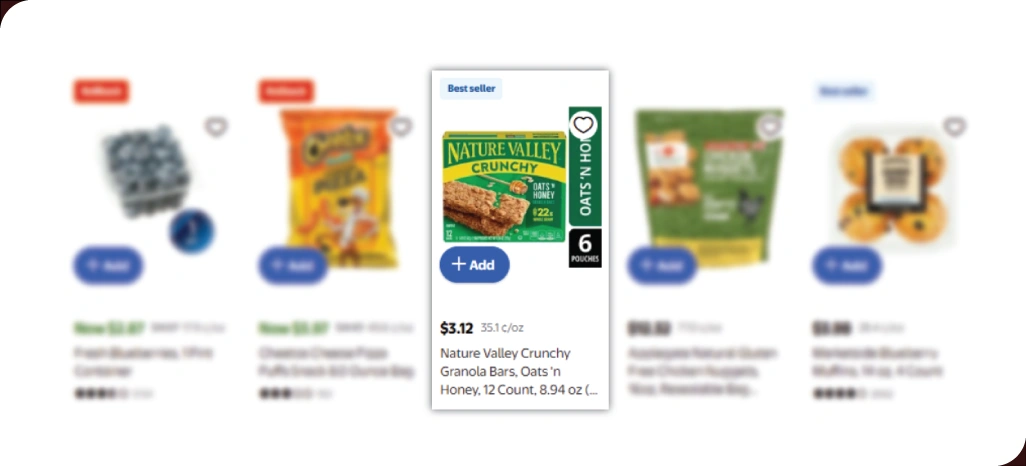
The insights drawn from Grocery Pricing Trends 2025 point toward a noticeable transformation in how retailers approach pricing strategy. Among the most impactful developments are:
- Personalized Pricing is becoming increasingly relevant, with retailers offering tailored discounts influenced by customers’ previous shopping behaviors.
- Dynamic BOGO Offers are gaining traction, with real-time offer updates driven by competitive pricing shifts and demand changes.
- Sustainability-Informed Pricing reflects growing consumer interest in ethical sourcing, as more shoppers show readiness to pay a premium for eco-conscious products.
Retailers who track these shifts closely and adapt their pricing strategies accordingly will find stronger customer engagement and sustained brand trust in an increasingly competitive space.
The Strategic Impact of Technology in Price Monitoring
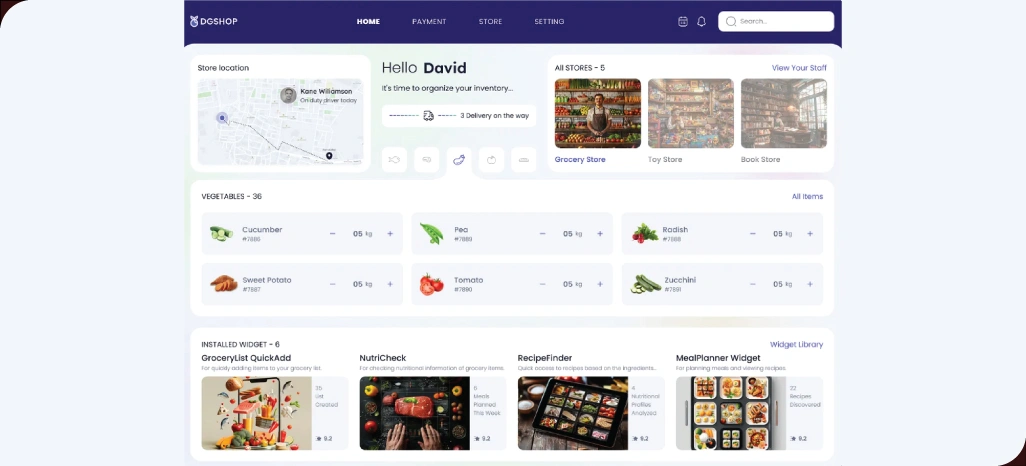
Robust, data-driven technologies increasingly power modern pricing operations. Today’s retailers rely on sophisticated tools designed to simplify and optimize price tracking and response across dynamic retail environments.
Key components of this technological ecosystem include:
- Cloud-based dashboards that allow centralized monitoring and control across multiple store locations, ensuring consistency and visibility.
- AI-powered engines are capable of recommending dynamic pricing models based on real-time demand, competitor behavior, and inventory levels.
- API integrations that facilitate smooth communication between pricing tools and point-of-sale (POS) systems, reducing manual effort and errors.
Retailers who are adopting Real-Time Retail Intelligence USA solutions are not only accelerating decision-making but also enhancing coordination across sales, marketing, and inventory teams, leading to more synchronized retail operations.
Strategic Direction Ahead: The Evolving U.S. Grocery Retail Landscape
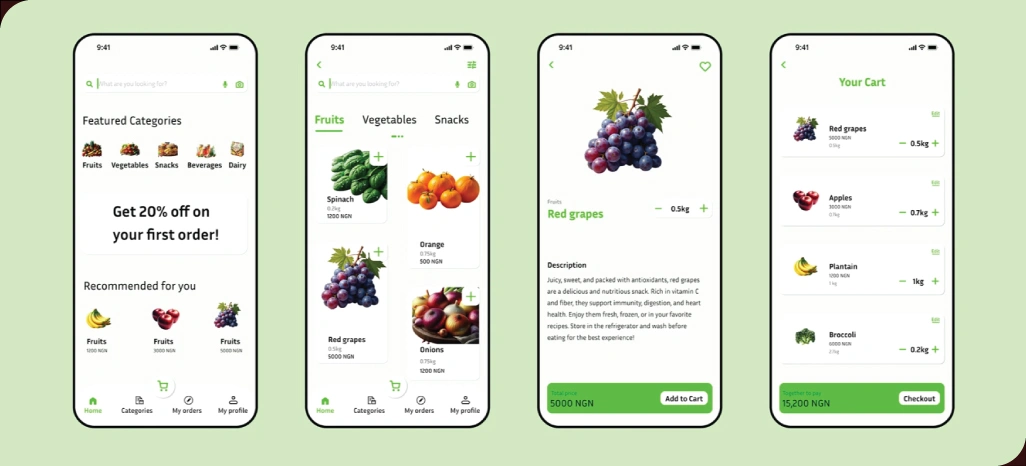
The future of grocery retail is increasingly shaped by data-driven pricing strategies rather than just assortment or shelf space. As consumer expectations shift rapidly, the role of U.S. Retail Price Monitoring has evolved into a critical function, enabling retailers to navigate market fluctuations with confidence and precision.
Simultaneously, forward-thinking pricing teams are now embracing Dynamic Price Tracking Solutions not as an innovation, but as a baseline requirement for competitiveness. These tools allow real-time responsiveness and keep pricing aligned with both market forces and shopper behavior.
Retailers investing in these capabilities by 2025 are already setting the pace — and by 2026, the divide between data-first leaders and lagging competitors will be unmistakable.
Key strategic focus areas include
- Driving margin growth through adaptive pricing models.
- Shifting from reactionary to proactive pricing actions.
- Reducing manual processes with real-time automation.
- Improving promotional timing based on competitive insights.
How Retail Scrape Can Help You?
In today’s competitive grocery landscape, actionable insights from U.S. Retail Price Monitoring can make or break your retail strategy. We help you unlock the power of accurate, real-time pricing data to stay ahead of market trends and competitors.
Here’s how we deliver that advantage:
- Automated competitor price tracking across major platforms.
- Real-time dashboards customized to your product categories.
- Smart AI-based pricing recommendations for promotions and markdowns.
- Geo-targeted pricing insights for regional optimization.
- API integration for seamless flow into your ERP or retail systems.
- Fully compliant, secure, and ethical data sourcing.
Whether you're a grocery chain, DTC brand, or e-commerce marketplace, we empower you with intelligent data to make faster, smarter, and more profitable pricing decisions.
Conclusion
In 2025, U.S. Retail Price Monitoring will become a vital asset for grocery retailers aiming to stay competitive and data-driven. From adjusting prices with precision to responding to market changes instantly, it empowers businesses to make smarter decisions that directly impact profitability.
To stay ahead of evolving Grocery Pricing Trends 2025, it's time to integrate intelligent data into your pricing strategies. Contact Retail Scrape today for a personalized demo and discover how our insights can help you build a pricing advantage that resonates with modern shoppers.
